Today, our diet is increasingly low in nutrients (-40% since 1950), yet they are essential for the skin.
With our stressful lifestyles, trace element deficiencies are becoming increasingly common. Now more than ever, supplements are needed to counter these deficiencies!
Trace elements are necessary to the body in minute quantities. They are essential for growth, development and all the biological functions of the living organism. In the skin, trace elements regulate over 200 biological reactions. They are essential for energy production, collagen synthesis, nutrition, etc.
The main trace elements
Cutaneous Oligotherapy is a response to skin deficiencies in trace elements and minerals. These include copper, iron, magnesium, calcium, silicon, potassium and sulfur. Here are the main skin properties of three of them:
-
Copper: a powerful antioxidant and anti-inflammatory. It gives skin radiance and protection. It plays a role in cellular detoxification.
-
Zinc: Soothes redness and irritation. Increases skin firmness and elasticity. It purifies and limits excess sebum.
-
Silicon: deeply moisturizes the skin, increases elasticity in tired skin and slows cellular aging. As you can see, their functions are extremely varied. They cover the whole spectrum of cosmetic and biological activity on the skin.
The consequences of deficiencies
What happens if we lack trace elements? What you need to know is that we are often deficient in trace elements, and any deficiency can have serious consequences.
Why do we have deficiencies?
In the past, our diet was more or less balanced with fruit and vegetables. Today, however, it's clear that we've lost 40% of the trace elements in our diet. These lost trace elements are also lost through the skin, which is the last organ served. We feed the vital organs first. The body considers the skin to be non-vital, so all vital organs are fed before the skin is fed. This is why there are so many deficiencies, and why they show up on the skin.
The role of minerals
Iron
Iron, extracted from minerals such as hematite and sapphire, is essential for collagen synthesis, a process activated by the enzyme prolyl hydroxylase only in the presence of iron. Without iron, collagen synthesis is impossible. Laboratory experiments show that the addition of iron increases collagen production by fibroblasts by up to 400%, boosting skin density and thickness. This action has been confirmed by in-vitro tests and applications on human skin, visibly reducing wrinkles. This proves the anti-ageing efficacy of iron-containing skin care products, acting directly on biological activity.
Zinc
Zinc, present in high concentrations in smithsonite, acts on essential skin functions, notably glycation, a UV-induced phenomenon that generates toxic molecules known as AGEs. These AGEs, resulting from biological reactions such as the Maillard reaction, damage the skin. Zinc reduces these effects by limiting the production of AGEs, as demonstrated by in vitro tests. In addition, it protects DNA from UV damage via stress proteins that require zinc to function. Zinc is also a powerful antibacterial, effectively fighting the bacteria responsible for acne. Zinc-based skin care products show spectacular results against acne, without the need for medication.
Magnesium
Magnesium, extracted mainly from peridot, stimulates the production of ATP, a key molecule for storing and releasing cell energy. This process takes place in the mitochondria, where glucose is transformed into ATP through glycogenesis, activated by magnesium. Tests show that the addition of magnesium increases ATP concentration and improves cellular respiration. This powerful cellular energizer also protects against ageing induced by toxic substances such as FCCP. In the presence of magnesium, cell death is significantly reduced, confirming its anti-aging properties.
Silicon
Silicon, present in many minerals such as quartz, amethyst and jade, is renowned for its moisturizing properties. It works by stimulating the natural production of hyaluronic acid, a key molecule for capturing and retaining water in the dermis. Unlike a topical injection of hyaluronic acid, silicon durably improves the skin's ability to hydrate, even at low concentrations. This makes it a valuable ingredient in moisturizers.
How do you measure trace elements in the body?
A device called the "Oligoskin" is capable of spectrophotometrically measuring trace element levels in the skin. This is the first time in the world of cosmetics that a direct link has been made between molecules present in the skin and a product prescribed to supplement the skin with these molecules. Thanks to this device, the concentration of trace elements is measured and suitable products are listed.
Conclusion
Trace elements have become key active ingredients in the formulation of cosmetic products:
- In anti-aging products, we tend to use iron and magnesium.
- For dry skin: silicon
- For sensitive skin: zinc for repair
- For combination skin: zinc and chromium.
Discover our innovative product ranges and let yourself be seduced by Gemology products.
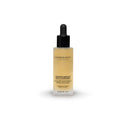
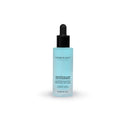
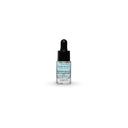
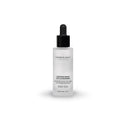
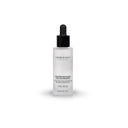
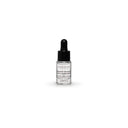
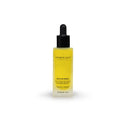

All skin types suffer from mineral deficiency: cutaneous oligotherapy
Today, our diet is increasingly low in nutrients (-40% since 1950), yet they are essential for the skin.
With our stressful lifestyles, trace element deficiencies are becoming increasingly common. Now more than ever, supplements are needed to counter these deficiencies!
Trace elements are necessary to the body in minute quantities. They are essential for growth, development and all the biological functions of the living organism. In the skin, trace elements regulate over 200 biological reactions. They are essential for energy production, collagen synthesis, nutrition, etc.
The main trace elements
Cutaneous Oligotherapy is a response to skin deficiencies in trace elements and minerals. These include copper, iron, magnesium, calcium, silicon, potassium and sulfur. Here are the main skin properties of three of them:
The consequences of deficiencies
What happens if we lack trace elements? What you need to know is that we are often deficient in trace elements, and any deficiency can have serious consequences.
Why do we have deficiencies?
In the past, our diet was more or less balanced with fruit and vegetables. Today, however, it's clear that we've lost 40% of the trace elements in our diet. These lost trace elements are also lost through the skin, which is the last organ served. We feed the vital organs first. The body considers the skin to be non-vital, so all vital organs are fed before the skin is fed. This is why there are so many deficiencies, and why they show up on the skin.
The role of minerals
Iron
Iron, extracted from minerals such as hematite and sapphire, is essential for collagen synthesis, a process activated by the enzyme prolyl hydroxylase only in the presence of iron. Without iron, collagen synthesis is impossible. Laboratory experiments show that the addition of iron increases collagen production by fibroblasts by up to 400%, boosting skin density and thickness. This action has been confirmed by in-vitro tests and applications on human skin, visibly reducing wrinkles. This proves the anti-ageing efficacy of iron-containing skin care products, acting directly on biological activity.
Zinc
Zinc, present in high concentrations in smithsonite, acts on essential skin functions, notably glycation, a UV-induced phenomenon that generates toxic molecules known as AGEs. These AGEs, resulting from biological reactions such as the Maillard reaction, damage the skin. Zinc reduces these effects by limiting the production of AGEs, as demonstrated by in vitro tests. In addition, it protects DNA from UV damage via stress proteins that require zinc to function. Zinc is also a powerful antibacterial, effectively fighting the bacteria responsible for acne. Zinc-based skin care products show spectacular results against acne, without the need for medication.
Magnesium
Magnesium, extracted mainly from peridot, stimulates the production of ATP, a key molecule for storing and releasing cell energy. This process takes place in the mitochondria, where glucose is transformed into ATP through glycogenesis, activated by magnesium. Tests show that the addition of magnesium increases ATP concentration and improves cellular respiration. This powerful cellular energizer also protects against ageing induced by toxic substances such as FCCP. In the presence of magnesium, cell death is significantly reduced, confirming its anti-aging properties.
Silicon
Silicon, present in many minerals such as quartz, amethyst and jade, is renowned for its moisturizing properties. It works by stimulating the natural production of hyaluronic acid, a key molecule for capturing and retaining water in the dermis. Unlike a topical injection of hyaluronic acid, silicon durably improves the skin's ability to hydrate, even at low concentrations. This makes it a valuable ingredient in moisturizers.
How do you measure trace elements in the body?
A device called the "Oligoskin" is capable of spectrophotometrically measuring trace element levels in the skin. This is the first time in the world of cosmetics that a direct link has been made between molecules present in the skin and a product prescribed to supplement the skin with these molecules. Thanks to this device, the concentration of trace elements is measured and suitable products are listed.
Conclusion
Trace elements have become key active ingredients in the formulation of cosmetic products:
Discover our innovative product ranges and let yourself be seduced by Gemology products.